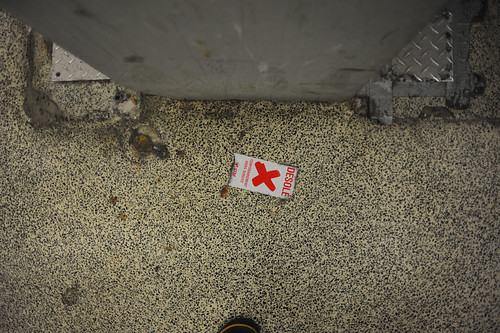Thus uttered Antoine Doinel in Truffaut’s film “Stolen Kisses” as a farewell letter to Madame Tabard is shussh-ered off through the Parisian pneumatic tube postal system..
Just enjoyed a coffee and reading Molly Steenson‘s article called Interfacing with the Subterranean on pneumatic tubes infrastructures in Issue 41 of the lovely, always diversely curious Cabinet Magazine. A nice little read on a system we’d now look on as antique, baroque and not just a little bit steampunk-y. That’s her up top sharing with me some of the very intriguing primary research she’s unearthed as she drops-gear and toe-and-heels the turn into the final lap of her dissertation Grand Prix race.
Aside from being still perplexed at how this proto-type internetwork of connected *tubes actually was able to route things hither-and-yon over cities and all such — I find it fascinating that versions of the hardware stack continue to exist in various ways. There are intranets within buildings still. The intriguing aspect of this is the material form that is rhymed (not perhaps on purpose or by design) by the networks electronic of today. Those guys standing around in the rooms receiving and continuing the little chariots of messages are little routers and TCP/IP compliant protocol handlers, one could think.
Why do I blog this? To capture a small historical scrapnote on the always constantly prototyping mechanics of communication that humans perform. This was likely perceived as wondrous, high-technology in its day. I’m surrounded this week by the hubris of high-technology prototyping, creation and thinking. Not all of it wondrous. Some of it down-right silly. Words like “engine” and context and gobble-dee-gook engineerig-y semantics make a hash of what the utterer may think of as perfectly reasonable sentence structure and syntax. I can’t tell verbs from nouns when I hear about context engines deciding that I’m in a meeting and little “agents” squirreled away on the chipset in my hand decide to book lunch but not before my chipmunk agent grabs an auctioneers gavel and let my local restaurants bid for he pleasure of my ordering a sandwich. I don’t believe this is an interesting future. There are others. More whimsical. More fun. More pneumatic.
Continue reading Pneu. Ma. Tique.




